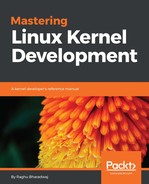Quintessentially, computing systems are designed, developed, and often tweaked for running user applications efficiently. Every element that goes into a computing platform is intended to enable effective and efficient ways for running applications. In other words, computing systems exist to run diverse application programs. Applications can run either as firmware in dedicated devices or as a "process" in systems driven by system software (operating systems).
At its core, a process is a running instance of a program in memory. The transformation from a program to a process happens when the program (on disk) is fetched into memory for execution.
A program’s binary image carries code (with all its binary instructions) and data (with all global data), which are mapped to distinct regions of memory with appropriate access permissions (read, write, and execute). Apart from code and data, a process is assigned additional memory regions called stack (for allocation of function call frames with auto variables and function arguments) and heap for dynamic allocations at runtime.
Multiple instances of the same program can exist with their respective memory allocations. For instance, for a web browser with multiple open tabs (running simultaneous browsing sessions), each tab is considered a process instance by the kernel, with unique memory allocations.
The following figure represents the layout of processes in memory:

